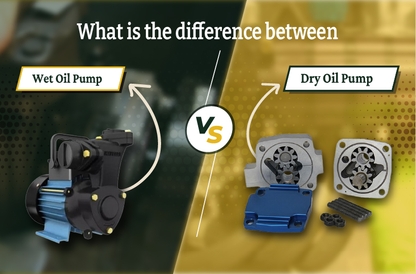
If you are interested in buying a valve, there are different types you can choose from. You can find them with industrial valves suppliers, oil and gas generating companies, mining, sewage systems and chemical manufacturing. Depending upon your needs, you can choose a specific type according to material and condition of operations. This article explains how different industrial valves help you make an appropriate decision.
Introduction
The oil and gas industry heavily relies on the pipeline system, from operation to the refinery system until the final distribution. Any failures or lapses in the system result in hazardous spills, and even environmental catastrophes cause significant loss. Valves in piping applications regulate the fluid's pressure, flow control, and opening and closing.
As per research, the Industrial valve market is valued at USD 75.31 billion in 2023 and is likely to reach USD 135.14 billion at the end of 2036, around 4.6% CAGR during the forecast period of 2024-2036. The role of valves in industrial processes is essential for flow control, maintaining the integrity of the supply lines and other vital roles. We have discussed types of valves in the oil and gas industry to understand their roles and applications.
Let's delve into it!
Effective industrial valves for the oil and gas industry
Different functions in the oil and gas industry require fluid flow control. Hence, different valves can be applied according to necessary outcomes. We have detailed some types of valves used in the oil and gas industry as well as their pros and cons.
Ball Valve
Ball valves are quarter-turn valves that use a hollow, perforated, and pivoting ball to control the flow of liquids or gasses. By rotating the ball, the valve opens or closes, which allows blocking or unblocking of the flow. Ball valves manufacturers make ball valves with a tight seal and are commonly well-known in industrial use due to their simple and reliable features.
Different types of ball valves have unique working techniques in pipeline conditions. However, the pipeline condition should be considered before choosing a ball valve. A floating ball valve gets support from the stem and seats. When it's close to the valve, the fluid pressure is on the seats, completely cutting off flow. At the same time, the ball on the trunnion ball valve is mounted and doesn’t rely on fluid pressure to hold it in place.
Application- Ball valves are widely used in the oil and gas industry for onshore and offshore applications.
- They are suitable for residential use to block the flow of water.
- Their quick action makes them ideal for emergency shut-off situations.
- Stainless steel
- Brass
- Carbon steel
- PVC
- Bronze
- Ductile Iron
- Nickel oil
- PTFE
- Titanium
- Ball-valve promotes rapid shut-offs.
- The ball and seat have impervious sealings.
- It can be designed in both large and small sizes.
- An increase in high pressure between the ball and seat results in wear and tear.
- Limited throttling capability can cause uneven wear and reduce efficiency.
- Larger sizes can be bulky and heavy, complicating installation and increasing costs.
Gate Valve
It consists of a gate, a pivoting stem and an actuator. The stem of this valve is threaded, as when the actuator is rotated, the stem goes up and down. As the threaded stem rises, the gate and valve open. Simultaneously, when the stem rotates downwards, the valve closes.
A gate valve works on the unrestricted flow of media and doesn’t alter the oil or gas flow rate. It makes gate valves suitable for pipelines where flow needs to be controlled and maintained. Plus, the gate valve's disc leaves the pipeline channel unobstructed to make it transmit slurry fluids like crude oil.
Application- Gate valves are used to isolate sections of pipelines during maintenance, repair, or emergency.
- It controls the flow of oil and gas from the well.
- Gate valves control the flow of various fluids during different stages of refining and processing.
- Cast Iron
- Carbon steel
- Stainless steel
- Brass
- Bronze
- Alloy steel
- Ductile Iron
- Monel
- Inconel
- Plastic- PVC, CPVC
- A gate valve easily handles flow control of highly viscous fluids.
- The fluids can be controlled by using an automated actuator to ease operations.
- It offers minimal pressure drop when fully open, ensuring efficient flow.
- Threaded stem in gate value gets high friction and depreciates fast.
- Gate valves are a poor candidate for throttling, and their outcomes may need improvement.
- The shut-offs in this valve are not casual. It limits itself to low-use applications or pipeline parts that present little urgency.
READ MORE : Everything you need to know about Gate Valves.
Globe Valve
A globe valve is attached with a plug-like piston to shut off devices. It is a linear valve that can be used to move up and down to open and shut flow when the actuator is turned. This valve can be opened at different levels. Due to this reason, it is trendy in the petrochemical industry. The size of the opening can be limited as per throttling needs.
The bottom of the valve, where the piston meets, has a curved base to lower pressure. As the elevated capacity rushes the fluid, it loses momentum. So, the globe valve works well where the pressure needs to be managed.
Application- Globe valves are ideal for fluid flow to adjust flow rates of crude oil, natural gas and other fluids in pipelines and processing systems.
- They are used in pressure control systems to maintain desired pressure levels.
- Globe valves are used in metering stations to regulate fluid flow and ensure accurate measurement and controls.
- Stainless Steel
- Carbon Steel
- Brass
- Bronze
- Ductile Iron
- Alloy Steel
- PTFE (Polytetrafluoroethylene, Teflon)
- Titanium
- Cast Iron
- A strong sealing is gained from a streamlined plug and packet stem.
- An automatic actuator makes the valve easy to use.
- It enhances fluid flow control and throttling functions.
- While opening and closing, threaded stems experience lots of friction, leading to delayed valve response time until the actuator is automated.
- The wear and tear increases due to high friction, raising the maintenance costs of globe valves.
- The leaks become manageable over time if the gland packing and the vertical axis are done correctly.
Check Valve
The check valve is a pressure-sensitive valve that opens when the pressure from the inlet side is higher than the pressure from the outer side. The backflow of media is not allowed. Plus, a check valve follows and maps out directions where backflow prevention is necessary.
It is used for refinery purposes in oil and gas plants, where the petroleum products are channeled into individual pipelines to maintain their purity. It is also used in distribution pipelines where flow is always directed forward.
Application- Check valves are used in gas lift operations to ensure that gas injected into the well doesn't flow back to gas lift lines.
- It is also used in compressor stations to prevent the reverse flow of gasses where the compressor is not operating.
- Check valves are used in various underwater equipment to prevent backflow in subsea oil and gas operations.
- Stainless steel
- Carbon steel
- Ductile Iron
- Cast Iron
- Inconel
- Titanium
- PVC/CPVC
- Nickel Alloy
- Brass
- Bronze
- As this valve is automatic, no actuator is needed.
- Due to the restriction of fluid backflow, the cross-contamination of product lines or batches is avoided.
- It provides reliable operation with minimal manual intervention, reducing the risk of human error.
- The valve installation has to be done very carefully, or else it will not be able to respond to the fluid pressure to defeat the valve's purpose.
- Usually, a check valve takes away an element of manual pipeline control as there is no actuator dominance involved.
- It can be prone to wear over time, especially in systems with frequent pressure fluctuations, leading to potential failure or leakage.
Selection criteria for oil and gas valves
While selecting valves for the oil and gas industry, several factors ensure optimal performance, safety, and efficiency.
Pressure rating
Valves should bear high-pressure conditions, especially in oil and gas operations. Selecting valves that have appropriate pressure ratings ensures safety, reliability and longevity in your system and prevents failures and downtime. A WOG-rated valve is qualified to manage water, oil and gas pipelines.
Temperature Rating
The oil and gas industry is involved in extreme temperatures. Valves with correct temperature ratings maintain their integrity and function under harsh thermal conditions. It ensures consistent operations and minimizes maintenance needs.
Material Selection
The material used in valve construction must resist corrosion, erosion, and chemical attack. Selecting the suitable material performs best in the most aggressive environment to safeguard your investment.
Flow Requirements
The valve should meet the system flow for precise control and efficiency. The correct valve will optimize flow performance and ensure smooth operation, whether you need throttling, on-off control or backflow prevention.
Actuation Type
Manual, electric, pneumatic, or hydraulic actuation options offer different levels of control and automation. Selecting the right actuation type enhances operational efficiency, safety, and convenience, especially in remote or hazardous locations.
Size and Weight
Valves should fit in your system space constraints without performance compromise. You can easily install, maintain, and integrate it into existing setups while meeting operations needs by choosing the correct size and weight.
Choose valves that align with your specifications.
Browse our extensive range for the best outcomes!
Special Considerations for Oil and Gas Valves
When selecting valves for the oil and gas industry, special considerations are crucial to ensure your operations' safety, efficiency, and sustainability. Here’s what you need to focus on
Safety and Reliability
Valves in the oil and gas sector must be designed to withstand the harshest conditions while providing fail-safe operation. Prioritizing safety and reliability in your valve selection minimizes the risk of leaks, spills, and catastrophic failures, ensuring continuous and secure operations.
Emissions Control
Selecting valves that minimize fugitive emissions is essential, as there are increasing regulations on emissions. High-integrity valves designed for emissions control help you comply with environmental standards, protect the environment, and maintain a positive corporate reputation.
Maintenance Requirements
The longevity and performance of your valve depend on maintenance needs. Choosing valves with lower maintenance or regulation reduces downtime and operational costs and allows your team to focus on productivity rather than frequent repairs and replacements.
API Standards
API (American Petroleum Institute) standards are critical guidelines for ensuring the quality, safety, and performance of equipment used in the oil and gas industry. By adhering to API standards, product development can be speeded up, cost-reduced, and accepted by international and state regulators.
Conclusion
Valves are essential in oil and gas because they ensure efficient fluid control, maintain fluid safety, and prevent costly operational disruptions. Choosing the right valve manufacturer helps to choose valves for specific applications that involve considering factors like pressure, temperature, flow rate and fluid composition. We have mentioned effective valves used in the oil and gas industry that have unique benefits in terms of process and operational needs.
Need reliable valves for your oil and gas industrial operations?
Let us help you find the ideal solution for your needs.



